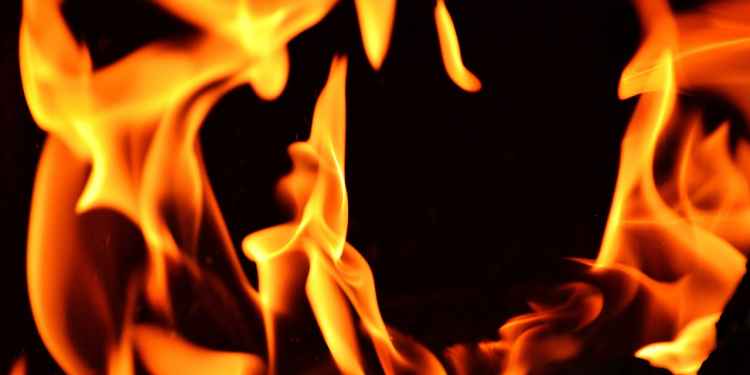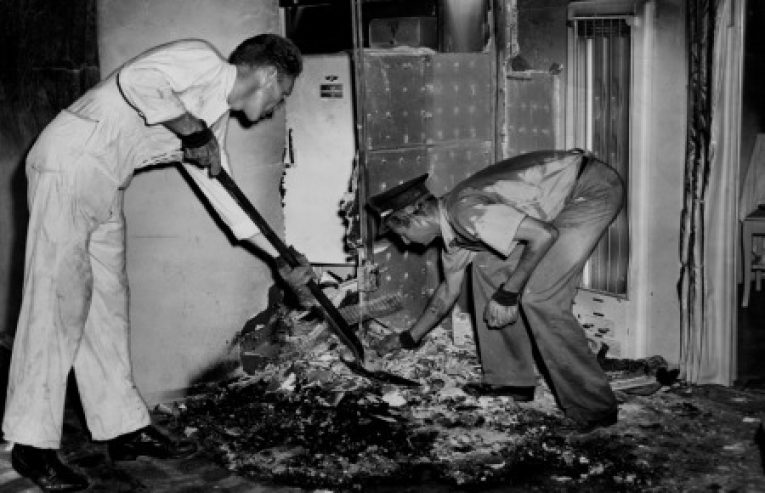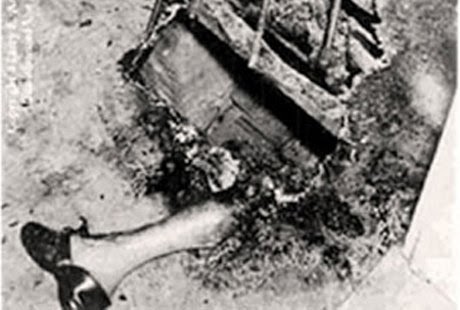Has The Phenomenon Of Spontaneous Human Combustion Reignited?
January 20, 2018 6:00 AM
This article is more than six years old.
With two reports of members of the public seemingly bursting into flames at end of last year, we're asking whether 2018 could be the year that the strange phenomenon of Spontaneous Human Combustion makes a come back?

Photo: pixabay.com
I remember as a teen growing up in the 90s Spontaneous Human Combustion (SHC) was a staple of the Fortean Times and a widely debated topic. It seemed there was constantly incoming reports of people suddenly bursting into flames from all corners of the globe.
The craze of dying in an inexplicable ball of flames seems to have phased out over the last couple of decades, but towards the end of last year two new cases emerged in quick succession.
The first was the unexplained death of John Nolan, a 70-year-old man who burst in to flames as he walked a long a busy London street in September last year in broad day light.
Shocked onlookers tried to extinguish the pensioner and were quick to call for help, but unfortunately the man died later in hospital. Weirdly, fire investigators found no obvious cause for the blaze.
No accelerants were found on the former construction worker's body, he was said to be a well-liked member of the community, and no witnesses have reported that he made contact with anyone else before the fire started.
Then in the run up to Christmas, a second man burst into flames, this time in Hull. The blaze which again occurred on a road side was spotted by a local resident, the unnamed man died at the scene.
A witness told The Hull Daily Mail, "me and another bloke tried to roll him on the ground to put the fire out."
Just like the London incident, the cause of the fire remains a mystery and police have said they're not currently looking for anyone in connection with the incident.
Could these two bizarre incidents, just months apart, signal the start of a SHC epidemic? I guess only time will tell. Until then, Gareth Bellamy, our expert on all things weird, looks back at the origins of this curious occurrence.
A History Of Spontaneous Human Combustion
The recent stories in the media about people apparently spontaneously bursting into flame whilst going about their business, may seem like a story from the X-Files way back in the mid-90s, but the record of SHC actually goes back to the 15th century.
Polonus Vorsitus, a horseman, had apparently been knocking back strong glasses of wine near his home in Milan. He then began to belch fire, burst into flames, and die in front of his horrified parents. Not much of a night in!
Did the event actually happen as reported? A Danish physician recorded the story, apparently after discussing the story with direct descendants of Polonus.
Being unable to verify any of the claims in the report, for the first, documented claim to flame we need to fast forward to the early 19th century of Ireland.
The Dublin Journal of Medical and Chemical Sciences in 1833 carried a report from Dr Edmond Sharkey about Michael Flaherty, a 76-year-old. He was reported to have died in his home on 22 December 1832.
The Gardai reported that the fire was contained in the immediate area of Mr Flaherty's body. The pathologist noted that some of his bones had been cremated, requiring a temperature of between 700-1000 degrees Celsius, whilst other bones remained. The fire hadn't spread from the hearth and they found no trace of accelerant.
Further records dating back to the 1600s in France also have SHC like symptoms, but perhaps have too few details to be classed as genuine cases.
In December 1852, Charles Dickens published an instalment of Bleak House, within which the character of an old alcoholic, Mr Krook, dies apparently from SHC. Visitors to his flat describe a smell like frying meat, a pungent yellow grease staining the walls and windows. Of Krook all that remained was a pile of ashes, even his cat was still alive in his flat.
Critics attacked Dickens for portraying such a ridiculous, fantastic scene, yet Dickens fought back. Writing to one critic about an Italian countess who had reportedly spontaneously combusted in 1731.
Dickens wasn't alone in fictional portrayals of SHC. Washington Irving, Herman Neville and Mark Twain all wrote of characters who suffered similar fates - bursting into flame, their torsos consumed, but their extremities remaining. So these writers must have been basing their fictional accounts on something, right? Is there no smoke without fire? What documented evidence do we have in modern times of SHC occurring?
If you're a child of the 80s, you may well be familiar with some famous SHC cases from recent history. Publications like The Unexplained and TV shows like Arthur C Clarke's Mysterious World brought reignited SHC for a new audience, and featured pictures from several cases.
Mary Reeser

A 67 year-year-old woman who was found burned to death in her house on 2nd July 1951 in Florida. Seen apparently well the previous evening, her landlady became suspicious when she noticed the doorknob to her house was extremely hot. She called the police, who upon entering found her body completely destroyed by fire, except for one leg, protruding from the ashes. Everything else in the room hadn't been touched by the fire, apart from the chair she'd sat in.
The case against SHC: She was a heavy smoker, and user of sleeping pills. Could she have dozed off and the cigarette caused her untimely demise?
John Irving Bentley

Found at his home in Pennsylvania on 5th December 1966 when a meter reader arrived to read his meter. The meter reader noticed a strange, smoky odour and the noticed a blue smoke. When he reached the bathroom he found the remains of Bentley and ran to get help. To be honest, there was not much anyone could have done as all that remained of Bentley was a pile of ashes and his right foot.
The case against SHC: Bentley, a 92-year-old retired physician, was a pipe smoker. Although the pipe wasn't found by his body the theory is perhaps his pipe tobacco fell onto him, he ran to the bathroom to get water but was overcome by flames before he could do anything.
One of the most recent fictional portrayals of SHC occurred in South Park where several characters died from SHC. Being South Park, it turned out the cause was the characters holding in their own farts. We might all laugh, but perhaps Trey Parker, one of the co-creators of South Park had hit on something here. He's on the record as saying he based this incident on having seen several people light their own farts, producing large fireballs, so he doesn't see why that can't be the cause of SHC. Perhaps we should all follow the advice of that song in Frozen and 'Let it go!!!'
Related Content
Daily Horoscopes
You May Also Like
























